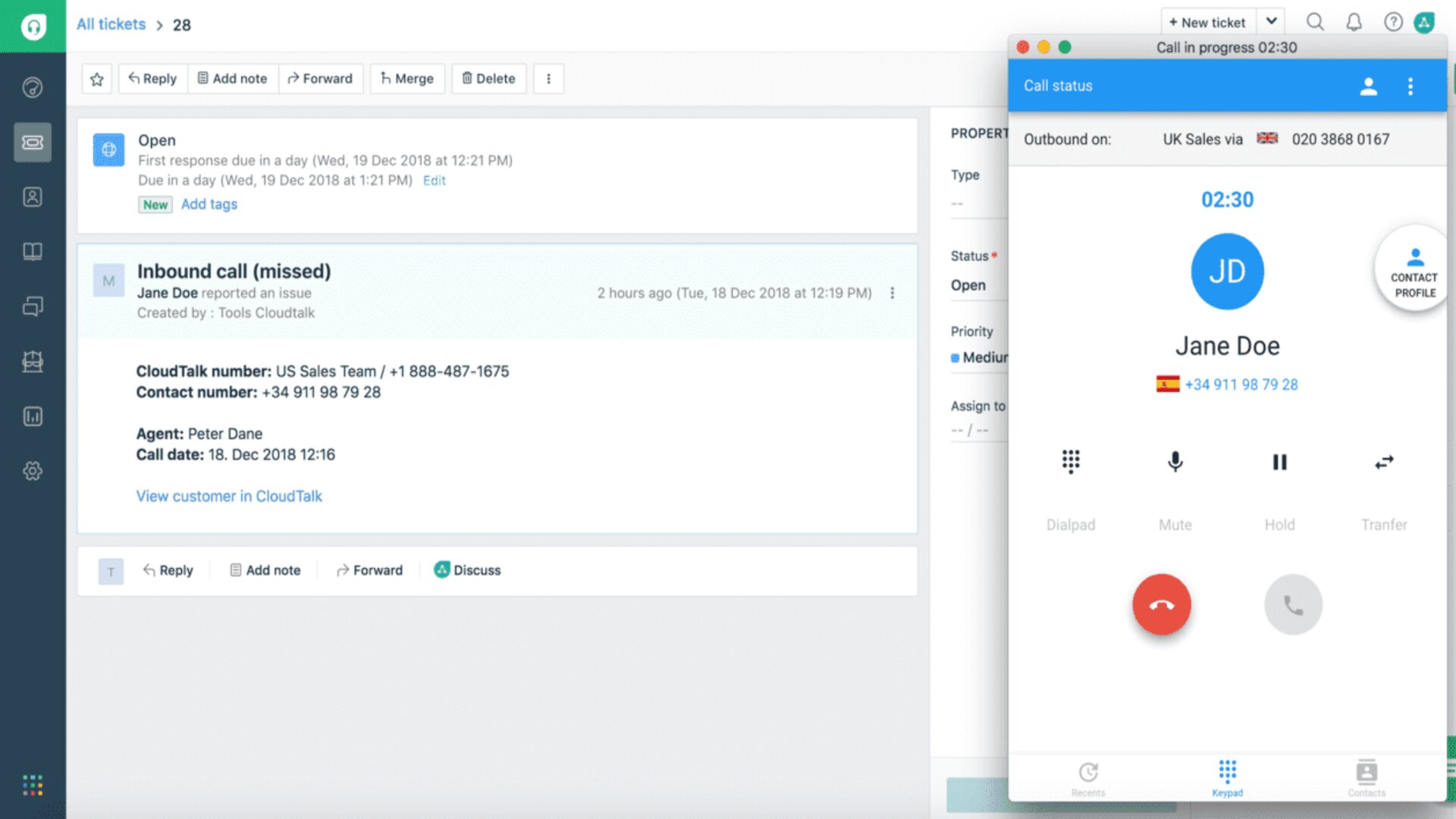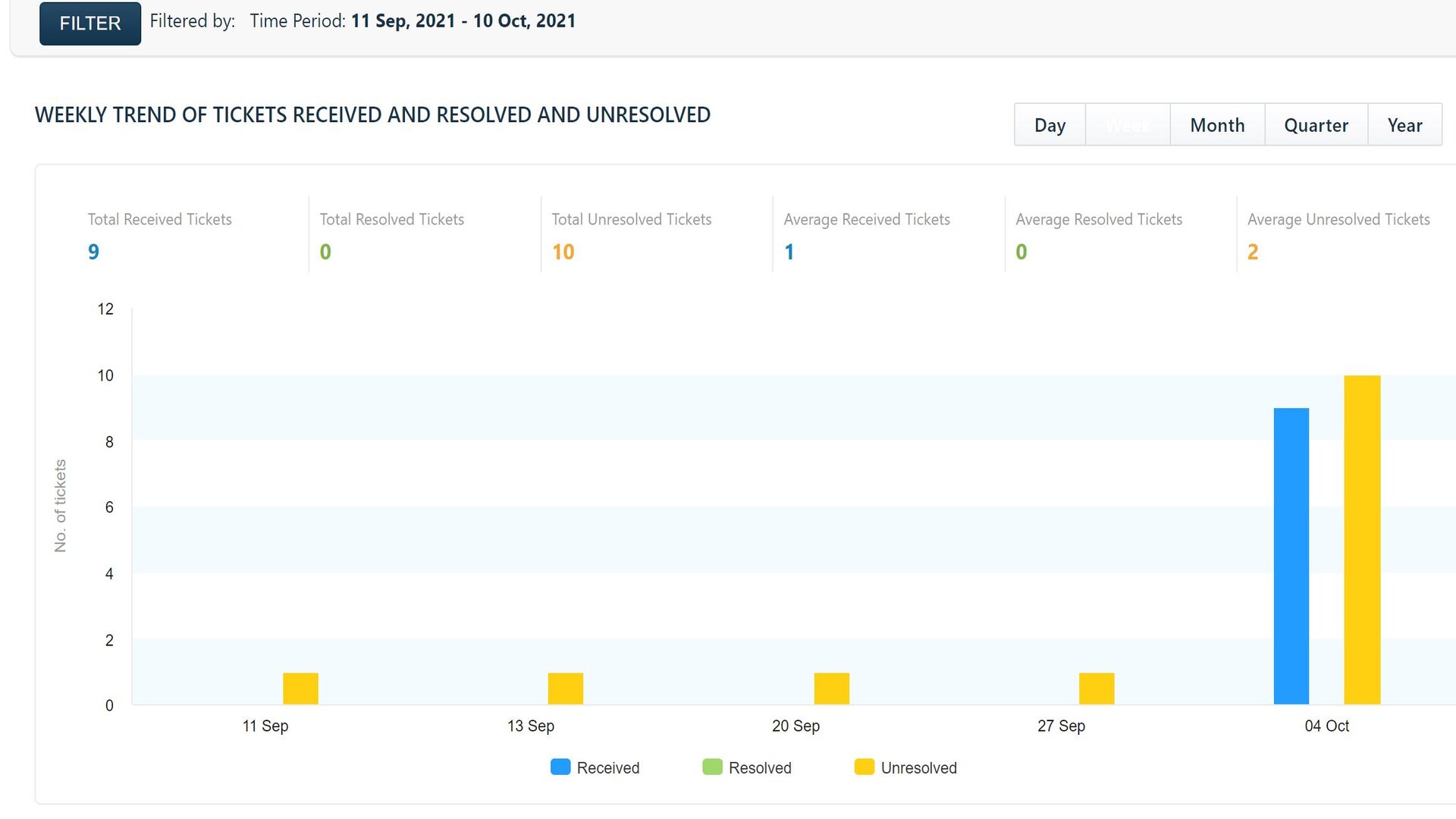Sponsored by Freshworks
How to choose live chat software for your business
Make sure your customers get the best experience

Live chat support enables businesses to provide real-time customer assistance in a world where instant communication has become the norm.
With a live chat module embedded on your company’s app or website, customers can easily contact your support team and get a swift resolution.
However, numerous live chat tools exist, and choosing the best one for your support operations can be difficult. Some live chat tools are offered individually, while others are part of software bundles that include other support tools. Different live chat tools have distinct features that give them a competitive advantage. Prices also vary.
With various features and pricing options, the best live chat solution depends on your business size, type, and specific needs.
Sign up for a Freshworks 14-day free trial
Freshworks offers multichannel ticket management, team collaboration tools, and smart automation to resolve issues faster. The platform's Freddy AI assists agents by suggesting replies, auto-prioritizing tickets, and delivering instant insights. With an intuitive interface and robust reporting tools, Freshworks helps businesses deliver faster, more personalized support, ideal for scaling teams.
What is live chat software?
Live chat software provides a chat interface for businesses to communicate with customers in real-time. The chat functionality can be integrated into your website or app, usually as a pop-up.
Customers who open the pop-up or widget can message a support agent, similar to how they talk to their friends on instant messaging apps.
During a live chat, customers can hold back-and-forth conversations with your support agents. They can upload files in the chat pane, and any uploaded information will be stored for future reference.
Sign up to the TechRadar Pro newsletter to get all the top news, opinion, features and guidance your business needs to succeed!
Just like people can close conversations and re-open them to continue where they left off, customers can also close and re-open conversations with your support agents, with all previous chats still intact.
Live chat tools provide the technical infrastructure and a user-friendly interface to help your support team engage smoothly with customers.
Why is live chat software important?
1. Faster response times
Support agents can respond faster to customers when they have a dedicated tool to handle this task. The tool stays open on their PC during working hours, and agents will receive notifications whenever a customer initiates a conversation. Many live chat tools can automatically assign new conversations to available agents, often based on the customer’s specific issue.
When a support agent gets notified, they can respond quickly to sort the customer’s issue. Faster response times lead to a better customer experience, and satisfied customers often leave positive reviews for others to see. This seemingly trivial benefit can work wonders for your business in the long run.

2. Cost-effectiveness
Live chat is a more cost-effective way to handle support inquiries than phone support, particularly for businesses with a high volume of inquiries. Support agents can handle multiple chats simultaneously, unlike phone agents who can hold only one call at a time. This trait reduces the number of support agents needed to staff a productive support team.
Likewise, live chat tools cost significantly less than telephone support tools. Live chat requires basic hardware and software, while telephone support requires sophisticated hardware with high upfront costs.
3. Chatbot integration
In this era dominated by artificial intelligence (AI), live chat can be incorporated with AI tools to avoid being left behind. Businesses can easily create chatbots to respond to mundane customer inquiries, such as order tracking status and price requests.
Chatbots have existed for a long time, but they have gotten more sophisticated and easier to create over time. Live chat tools let you create chatbots that assist your support team.
Note that chatbots aren’t a complete replacement for support agents. Instead, they help your support team focus less on mundane requests and more on the complex ones.
4. Analytics
Live chat tools don’t just provide a platform for customer communication. They enable you to monitor key customer engagement metrics, including response time, average ticket resolution time, overall ticket resolution rate, and number of interactions per ticket.
Key metrics are collected and displayed in a dashboard, enabling you to monitor them easily. These metrics indicate your support team’s productivity, allowing you to quickly identify when productivity isn’t ideal and take swift action to maintain high customer engagement levels.

Key features of live chat software
1. Real-time messaging
Real-time messaging is the foundation of any live chat tool. Customers must be able to initiate conversations and communicate in real-time with support agents.
Real-time messaging enables support agents to resolve customer issues quickly, as they can ask for further information whenever needed. This real-time communication creates a smooth flow like few other support channels.
Similar to instant messaging apps, live chat tools have read receipts, typing indicators, and chat timestamps. These features make it easier to stay up-to-date with conversations and refer to previous chats as needed.
2. Canned responses
As a business owner, you’ll likely face situations where different customers ask the same questions repeatedly. Instead of support agents typing the same response every time, they can create text snippets called “canned responses.”
When customers ask a common question, support agents can quickly choose the appropriate canned response from their dashboard. This feature saves considerable time that your support agents can redirect to more challenging demands.
3. Chat routing
Advanced live chat tools can route inquiries to specific agents based on their skillset and availability. For example, if a customer indicates they have a payment issue, the inquiry can be automatically routed to a support agent attached to the payments team.
This routing can be based on the inquiry category selected by the customer beforehand. It can also be based on the customer’s text– live chat tools can use AI to analyze the text and route it to the appropriate agent. Chat routing increases your support team’s effectiveness.
4. Online forms
If you run a small or medium-sized business, your support team may not be large enough to address all requests during peak hours. In that case, customers can fill out online forms stating their name, contact information, and issue. Support agents can examine the form details later and contact the customer to resolve their challenge.
5. Analytics
As mentioned earlier, live chat tools analyze how your support team interacts with customers and extract key metrics. You can monitor these metrics from a designated dashboard and identify areas for improvement in your customer service.
Key factors to consider when choosing live chat software
1. Cost-effectiveness
It’s almost a boilerplate that we include cost-effectiveness as the first consideration when choosing a software tool. We do this because we recognize that companies have different budgets and need tools that offer the best bang for their buck.
Just like you’d compare different options when shopping at a grocery store, you can make extensive comparisons when seeking a live chat tool.
Weigh the pricing options against your desired features and strike an ideal balance. The cheapest option isn’t always the best, but neither is the most expensive.
Fortunately, live chat tools are available at all price points. There are simple ones priced per agent or with fixed bundles for a specific number of agents. For example, some tools charge $10 to $20 per month per agent, while others can charge $100 per month for 10 agents.
There are also expensive live chat tools designed for large enterprises. These options have more sophisticated features and are more customizable. However, they are overkill for small to medium-sized businesses with simpler support needs.
You can research different options and choose one that fits your budget and support needs. Live chat is one of the most competitive software niches, so you can always find a platform that delivers the best features at your price range.
2. Scalability
Scalability is often overlooked when selecting business software. Yet, it’s crucial because businesses don’t stay the same size forever.
Some live chat tools handle scalability well, and some break under increasing support loads. You need the former if you run a business with plans for rapid growth.
Before selecting a live chat tool, verify that it can handle an increasing number of users without much stress. With a highly scalable tool, you can easily add more user accounts as your support team grows.
Despite increasing loads, the features will work smoothly, and metrics will be analyzed reliably. You should be able to add more automations to handle increasing support needs.
Live chat software providers usually state the maximum load their pricing plans can handle. If your support needs surpass your existing plan, you can upgrade to a higher plan to accommodate them.
Before selecting your live chat tool, verify that it can handle the support needs of both your current business size and the projected future size.
3. User-friendliness
Support agents will spend many hours using your live chat tool, and so will customers. Hence, you need a tool with an intuitive interface that both parties can easily understand.
Customers should be able to open the live chat tool and understand the controls at a glance– any confusion at this stage can make their problems more hectic.
Agents should be able to navigate the tool without stress. Features should be neatly arranged so that agents can communicate seamlessly and choose the relevant functionalities when needed.
Most live chat tools offer free trials or free versions that allow you to test the interface. If the interface is overly confusing, it’ll likely be worse for less technically-savvy customers, so such tools should be avoided.
4. AI features
With the recent artificial intelligence (AI) boom, companies are adopting AI into their support workflows to avoid being left behind. The best live chat tools now offer AI-based features that boost your support team’s productivity.
We’ve mentioned chatbots, which can assist support teams in responding to routine requests. However, AI offers much more than that.
Large language models (LLMs) can analyze real-time conversations and suggest different responses to customers. These LLMs can analyze previous conversations with the same customer to suggest personalized responses.
AI systems can analyze a customer’s text to detect their sentiment, letting agents know how to respond properly. AI can summarize long chat transcripts and help agents quickly understand the customer's issue– this way, a new support agent can seamlessly continue a conversation where their colleague left off.
If you run an online platform with a Knowledge Base, AI systems can retrieve information from this Knowledge Base to help customers resolve issues.
The applications are endless, which makes AI a key consideration when choosing a live chat tool. Selecting a live chat tool without AI features will be a competitive disadvantage.

5. Third-party integrations
Live chat is just a single tool in your customer support toolkit. You’ll have other support tools for your Knowledge Base, help desk ticketing, feedback collection, community forum, and other vital features. Enterprise businesses usually have a customer relationship management (CRM) system to track customer relations.
Your live chat tool should be integrated with other support tools. This integration enables smoother operations, as agents don’t need to switch endlessly between different tools when engaging with customers.
For example, your live chat module can be embedded within your CRM. Whenever a customer contacts your company, a support agent can chat with them right on the CRM. If the agent needs any information about the customer, they can retrieve it directly within the CRM instead of juggling separate tools.
Another example is integrating your live chat tool with your customer feedback tool. Once a customer’s issue is resolved and the agent ends the chat, the customer will automatically receive a request to rate their service experience on a scale of 1 to 5 stars.
Any ratings will be collected and analyzed by the feedback tool. If you observe frequently low ratings, it’s a sign that your support system needs improvement.
6. Security and privacy
During chat sessions, customers can share sensitive information that agents need to resolve their issues. Hence, security is non-negotiable when selecting a live chat tool. You don’t want a tool with lax security practices that’ll expose sensitive customer data.
Live chat platforms usually use sophisticated encryption algorithms, such as AES-128 or AES-256, to prevent unauthorized access to user data.
These encryption protocols prevent malicious actors from breaking into their systems to steal sensitive data. Customer support tools are a main target because they contain sensitive data that hackers can leverage for personal gain.
Your live chat platform should also adhere to privacy regulations in your customers’ jurisdictions. For example, if your customer base is located within the European Union (EU), your live chat tool should comply with GDPR regulations regarding customer data. Confirm the security and privacy features before making your final decision.
Final words
Choosing the best live chat software can seem overwhelming, but it shouldn’t be. We’ve explained which features to look out for and the key considerations when selecting a live chat tool. Follow these guidelines to pick the best tool that will help your business flourish in the long run.
Stefan has always been a lover of tech. He graduated with an MSc in geological engineering but soon discovered he had a knack for writing instead. So he decided to combine his newfound and life-long passions to become a technology writer. As a freelance content writer, Stefan can break down complex technological topics, making them easily digestible for the lay audience.

